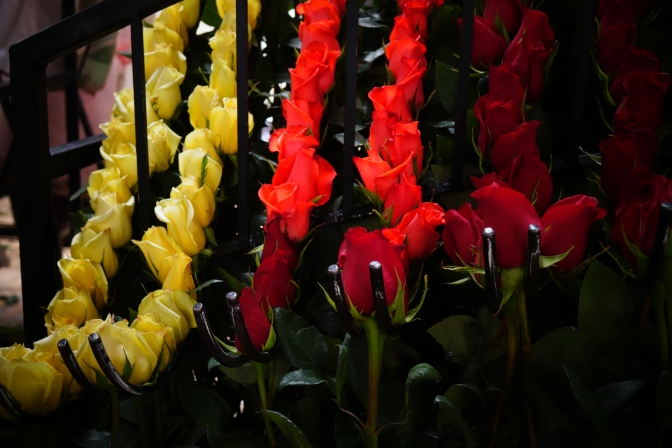 Happy Valentine’s Day from Ecuador! In honor of the occasion, we offer today a rose story with a dash of chocolate.
Happy Valentine’s Day from Ecuador! In honor of the occasion, we offer today a rose story with a dash of chocolate.
The Chocolate Dash
Once upon a time, in a show of ill-advised friendship, Aztec king Montezuma served a drink made from the coca bean to Hernán Cortés, who could recognize gold when he saw it. The conquistador took some beans home to Spain where a foodie monk mixed the bitter bean with sugar and, voilá, an addictive family of eats was born. The church’s response of labeling liquid chocolate the “food of the devil” (because it fed the “desires of the flesh,” an early nod to serotonin stimulation) initially depressed the treat’s popularity. But, after an influential paper praised its benefits to cognition in the mid-1800s, there was no turning back.

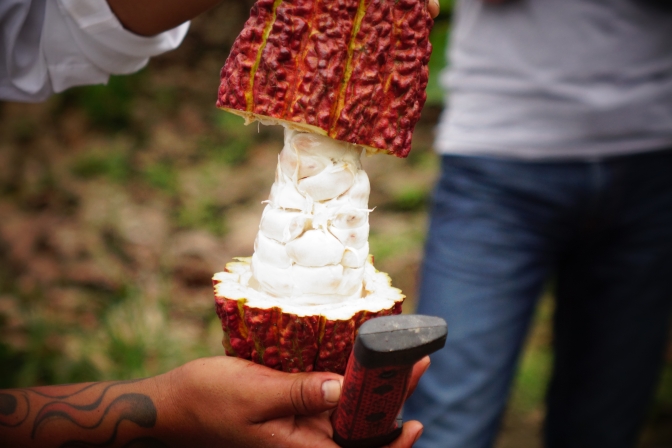
Because the coca bean only grows within 20 degrees north or south of the equator, Ecuador (named for the self-same equator) was prime territory for the bean’s commercial cultivation, and cultivate it the Spanish and their successors did.
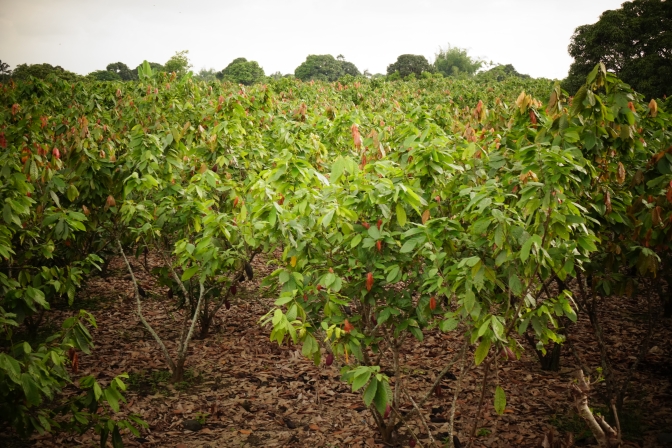
By the early 1900s, coca beans constituted 90% of Ecuador’s exports. Some coca haciendas were so vast and profitable, they printed their own currencies and operated like postage-stamp states.
Fast forward into the 20th century. A fungus invades the coca plantations. World wars disrupt the sea lanes to Europe. The coca leaf (source of cocaine) gets a bad name and is widely banned. Ecuador spirals into economic crisis. Oil, today the country’s biggest export, has not yet been discovered in the Amazon basin. The nation is forced to diversify. And diversify it does.
In the lowlands, out go the coca beans, in come bananas.
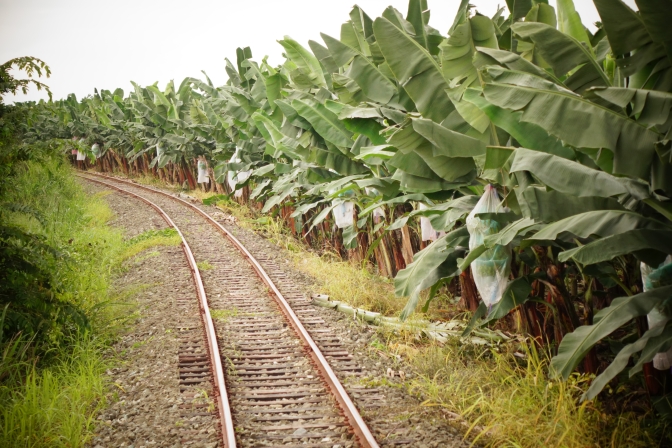
Coastal entrepreneurs begin cultivating shrimp.
And, in the Andes, growers plant roses.
Coming Up Roses
Today, Ecuador is the biggest exporter of roses in the world. If you give or receive Valentine’s Day roses, they very likely came from the soil Partout has been traipsing since the beginning of February.
Roses thrive here and in other equatorial countries because the sun delivers a reliable 12 hours of daily sunshine year-round at favorable radiation levels leavened with lots of rain. Vast swatches of the green Andean hillsides from north of Quito through the province of Cotopaxi are flocked with the plastic roofs of greenhouses, where they are grown indoors to prevent the birds and bees from doing their thing and spoiling the fidelity of the colors.
Under these conditions, roses can grow 10 feet tall and ramrod straight. We saw these giants with our own eyes on a rose plantation we visited en route from Quito to Guayaquil on our four-day “train of wonders” trip.
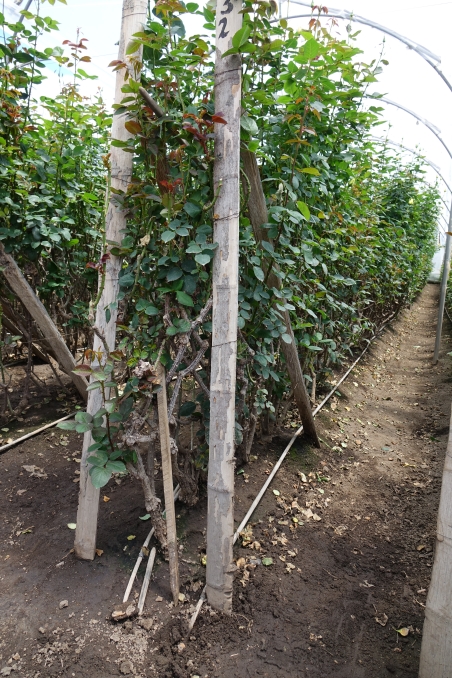
With Valentine’s Day barely a week away, the plantation was in high-season gear. For both historical and practical reasons, most rose workers are women. Historically, men in the countryside have migrated to cities for work, leaving their women behind to keep the home fires burning and form a large and willing work force. Practically, it turns out, women distinguish color better than men so they are better suited for the color-sensitive work. As our guide told us, there are nine varieties of red for women. For men, one.
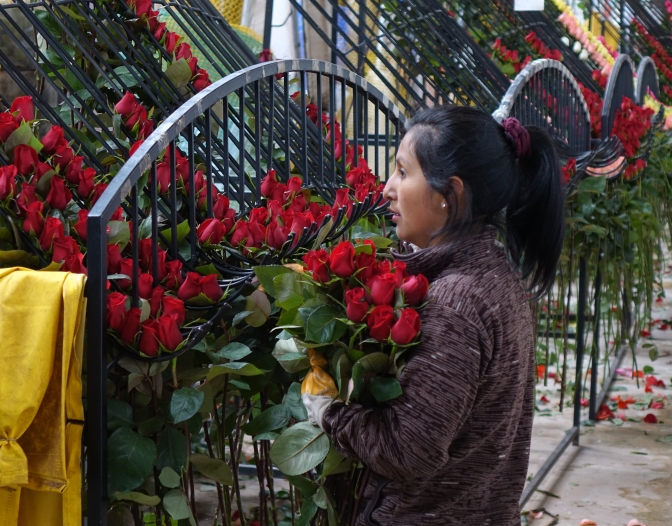
Appropriately for Valentine’s Day, the process starts with a couple – he measuring the length and size of the stems, she clipping and bunching the blooms. Once clipped, stems are soaked in water for and hour or two to steel them for the sprint to our vases.
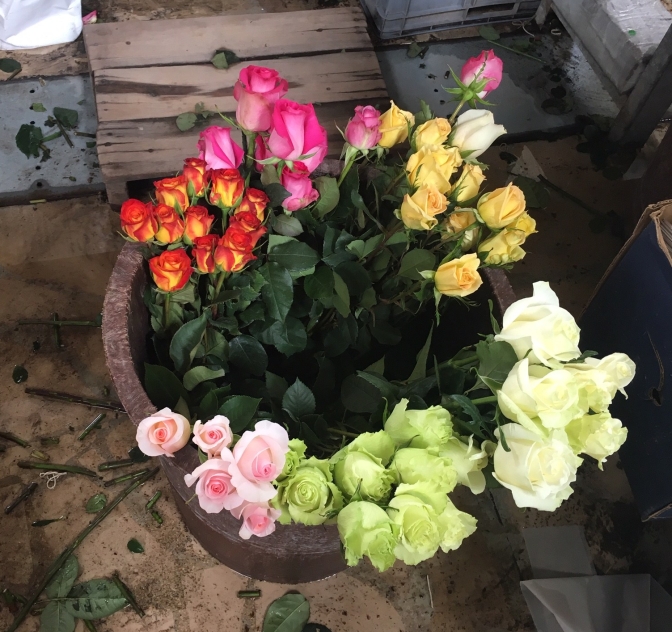 Thus hydrated, the blooms are wrapped and the stems sent down the assembly line to be labeled by color.
Thus hydrated, the blooms are wrapped and the stems sent down the assembly line to be labeled by color.
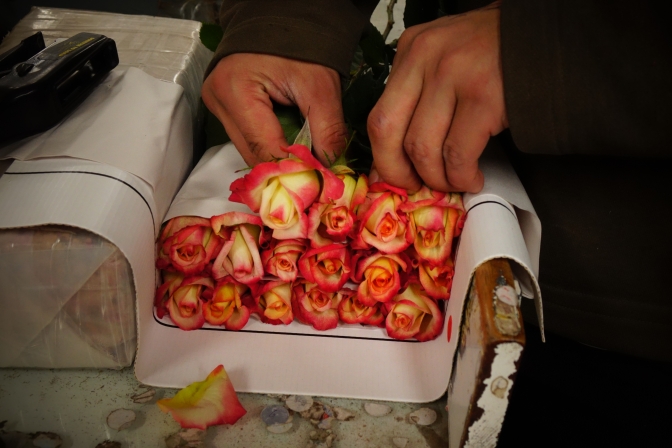
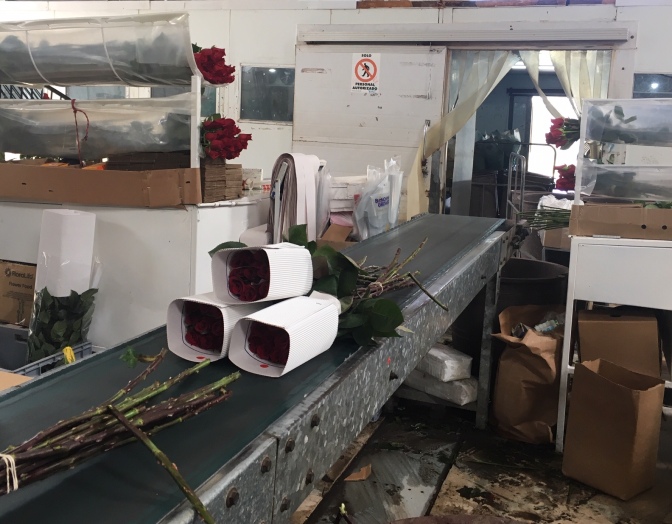
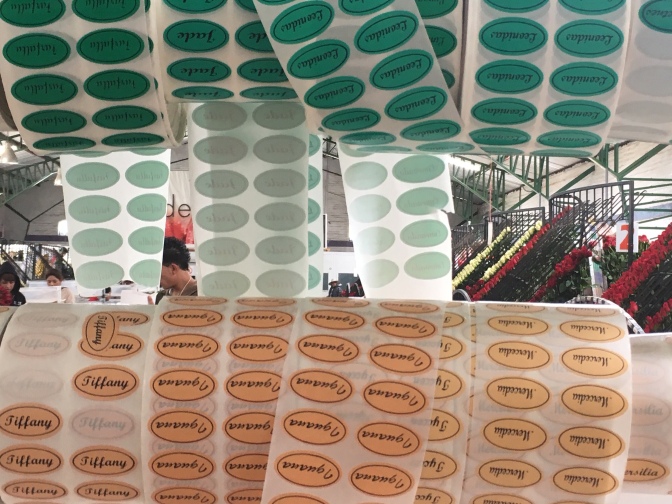
After labeling, it is into cold storage for 1-2 days of chilling before the beauties are loaded onto special rose flights immediately after sunset and flown overnight by the hundreds of thousands of pounds to markets all over the world, each batch bar-coded to identify its source, color and harvest data.
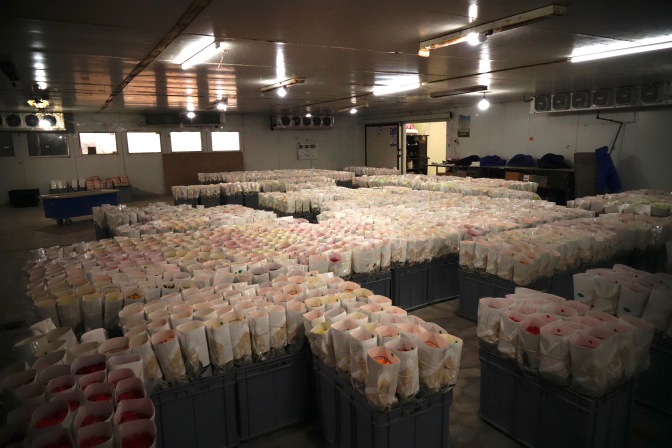
Roses are cultivated with their markets in mind. Because Russians like to display their roses in six-foot pots, they get the 10-foot stems. Americans like shorter stems with bigger blossoms so that’s what goes their way. Blooms not exported are sold in the local markets near the plantations for about $5 for three dozen, given to employees to sell on their own for extra income or composted.
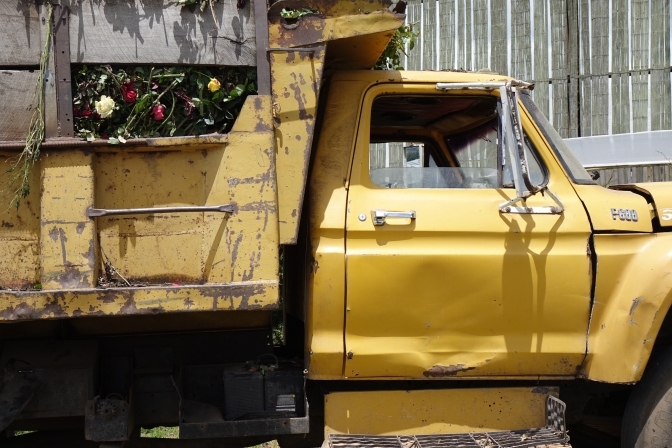
In the happiest of endings, each rose eventually brightens not only Ecuador’s economy but someone’s day, on Valentine’s Day or any day.

Sent with all our love.
FROM THE PARTOUT TOOLBOX:
Ever wondered how to keep your roses fresh after you use up the little packet of plant food they come bundled with? Every two days, change the water and cut the stems at a 90-degree angle. The angle is important because it facilitates both hydration and cleansing. Mix 1 tsp of vinegar and 1 tsp of sugar into the fresh water, the vinegar to clean the water, the sugar to feed the blooms. If outer petals begin to droop, carefully peel them away to expose the fresher, inner blossom.
TOP TIP: Make someone happy. Give roses on Valentine’s Day. Who knows? We might have been there to see them growing for you.
COMING SOON: The Little Train That Does
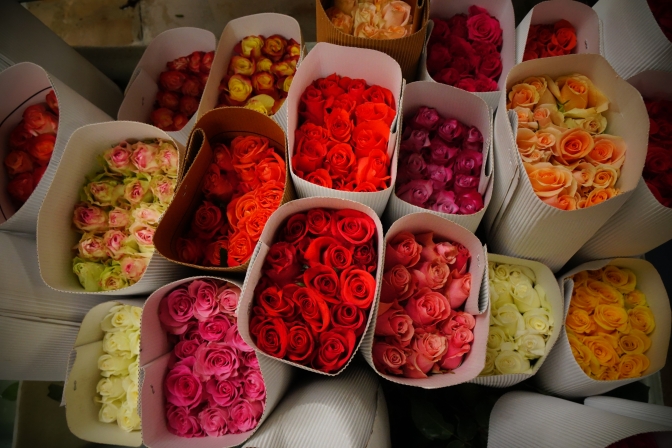
What a beautiful Valentine treat for us! Such a treat, Partout. Love you back!
LikeLiked by 1 person
And I read your post today, February 14th! I don’t remember any rose operations 40 years ago. And I’ve never before seen what our chocolates begin as. I’d be interested to know if the rose growing uses lots of nasty chemicals, etc.
LikeLike
We were told there is a big emphasis on natural techniques of growing both to protect workers and to avoid degrading the environment. I seem to have accidentally edited out a description of their approach to sunburned plants: They spray them with milk!
LikeLike
Enjoyed the jolt back to Ecuador! Happy memories. ~Polly~
LikeLiked by 1 person
I would send you some of the warmth – along with some roses – if I could.
LikeLike
Happy Valentines day to you too! Thank you for the history and culture lesson. Who knew Ecuador was so important for romance?
LikeLiked by 1 person